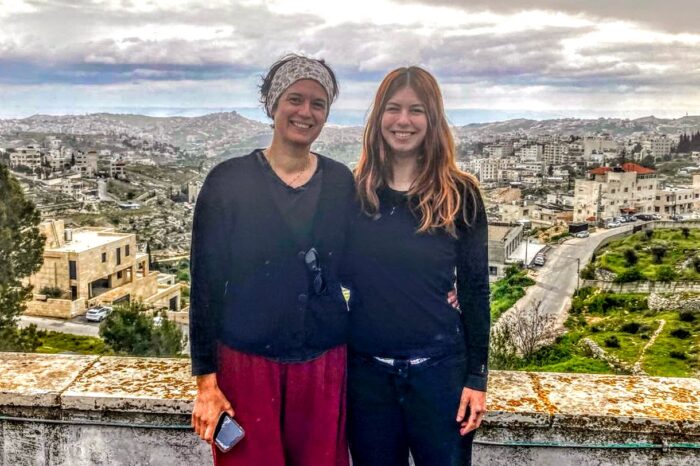Two days ago I had the good fortune of walking along Wadi Al-Makhrour with a guide and another volunteer to Battir. The Makhrour Valley, a UNESCO world heritage site and the last remaining biodiversity-rich area in Bethlehem, has been cultivated continuously for over 4000 years. It is irrigated from seven fresh-water springs spring that allows inhabitants to grow crops on mountainside terraces called habbai’l. Battir also contains a 2,000 year old Roman pool that is used by kids in the summer months and men on the morning of their wedding.
Donate to sustain the work, here!
Battir is classified as Area C which means it is under full Israeli control. 60 percent of the occupied West Bank’s territory is considered Area C and Israel occupying forces are quickly eating up the landscape in these vulnerable spaces. Across the Makhrour valley, overlooking the terraces, 560 new housing units are being built in a settlement called Har Gilo West. Palestinians fear that it will eventually block water from reaching the springs, as Israeli construction elsewhere has already caused many life-giving springs to dry up. Israel controls the majority of the water supply in all territories and strictly rations the amount of water Palestinians can use from the mountain aquifer so the death of a spring often means the death of the original Palestinian town.
Although Israeli authorities claim that this housing project would not affect any ecology of significance, a recent survey conducted on the site found 195 plant species, 25 butterfly species, and three endangered bird species. It is also a vital habitat for the endangered mountain gazelle and striped hyena.
Closer to Battir, the difference between the Palestinian cultivated side of the valley and the Israeli colonized side is significant. The west side is lush and green with olive trees and all hues of blooming flowers. To the east the terraces have crumbled and pine trees dominate the slope. I learned that a zionist organization called The Jewish National Fund has planted 240 million trees, most of which are European Aleppo pines which need little maintenance and grow fast in semiarid climates. I was told that Israelis utilize them specifically for the acidic quality of their fallen needles which prevent germination of native plants and hinder undergrowth needed for Palestinian shepherds to successfully care for their flock. In addition, at least 46 JNF forests are planted on the ruins of Palestinian villages with the intention of covering them up to erase them from public memory. But of course no Palestinian could ever forget the murder and forced-evacuation of their families.

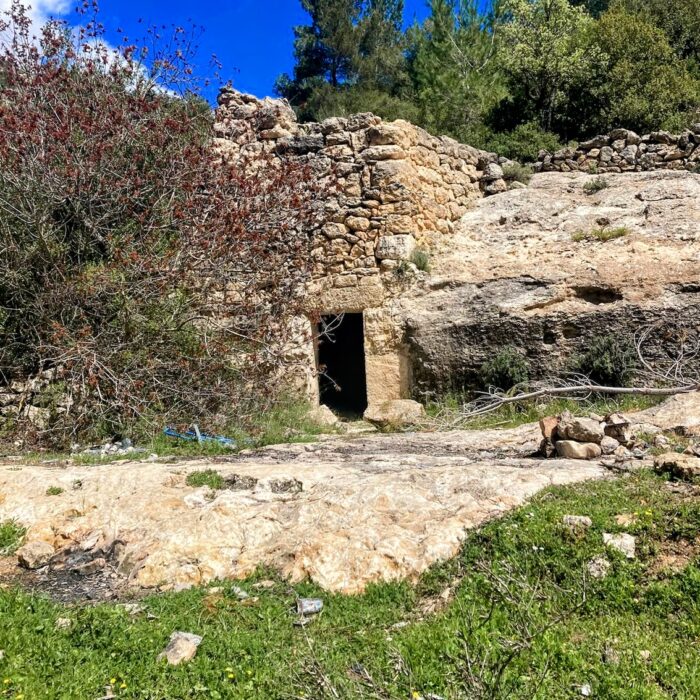
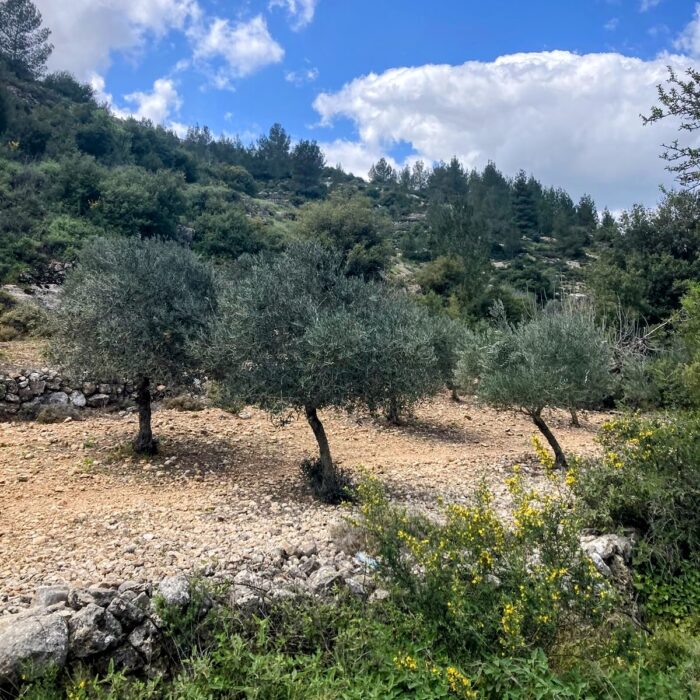
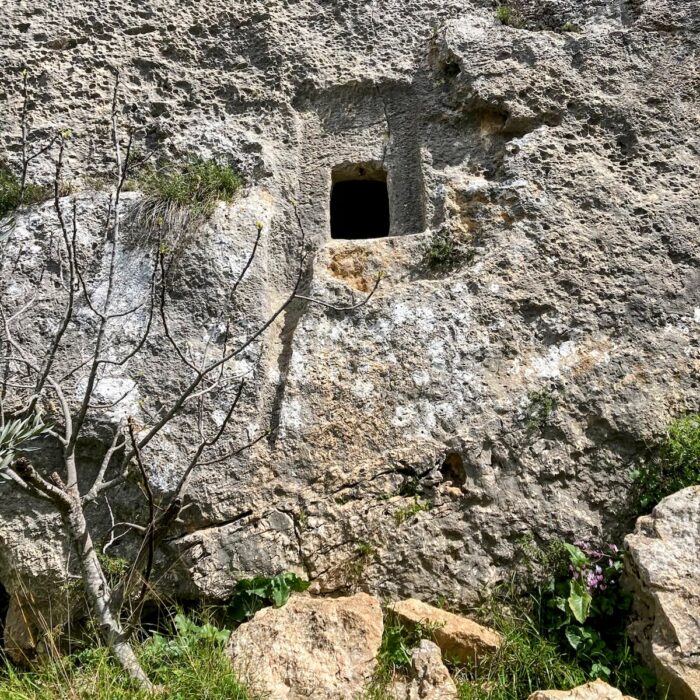
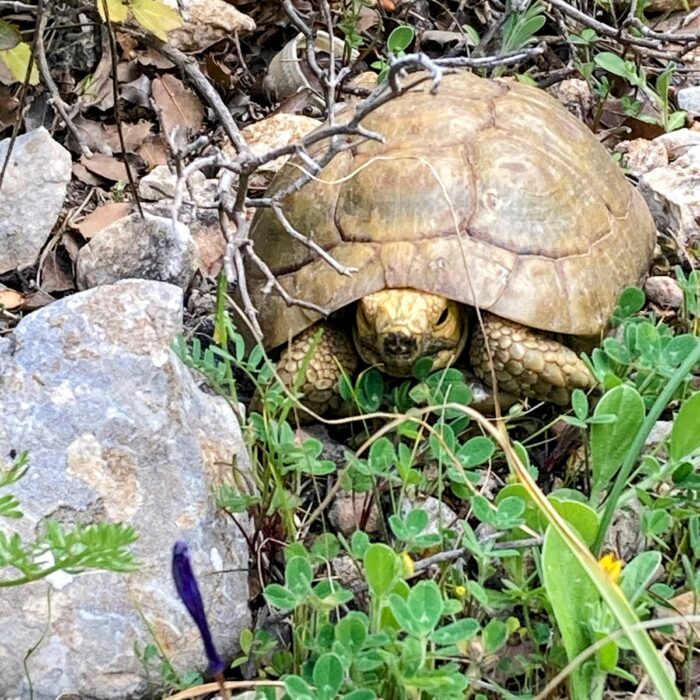
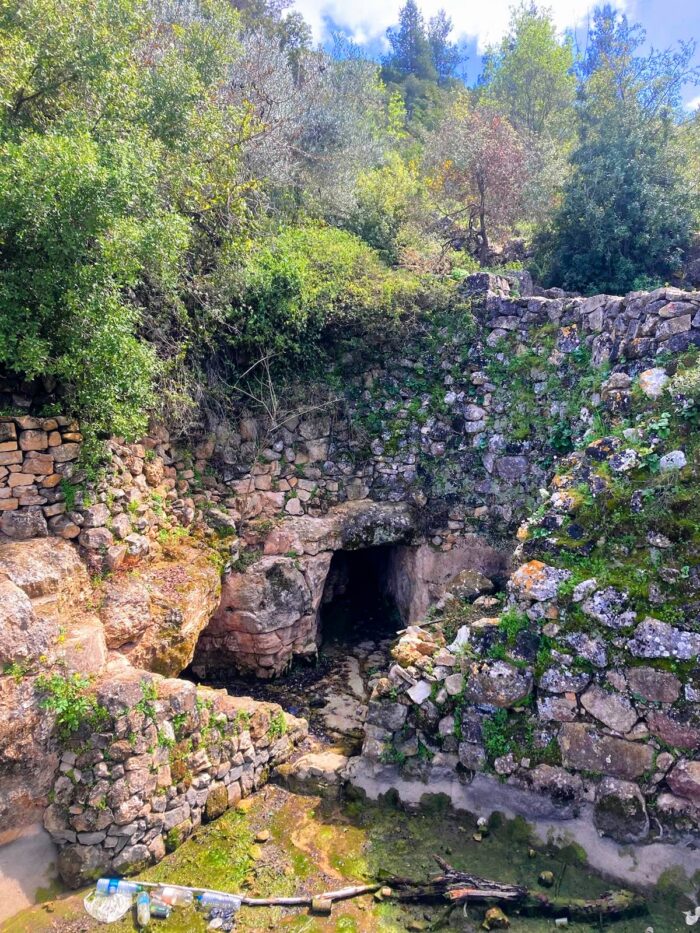
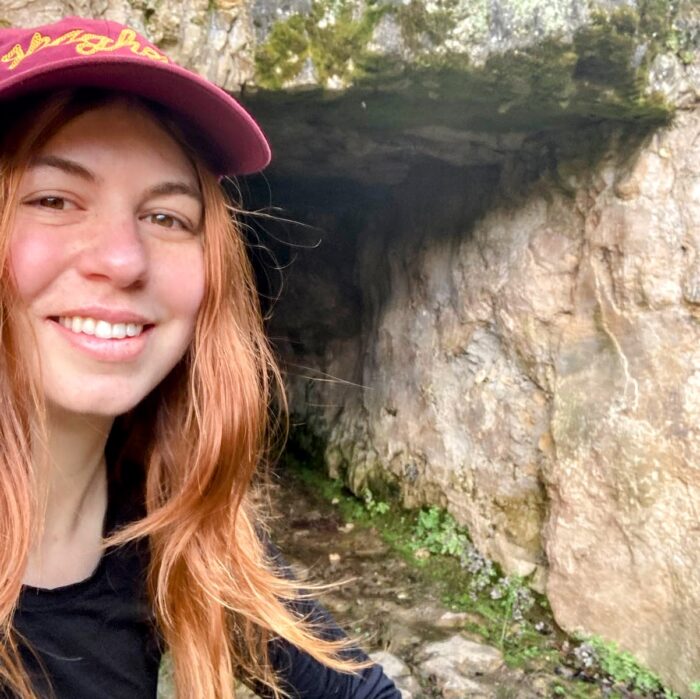
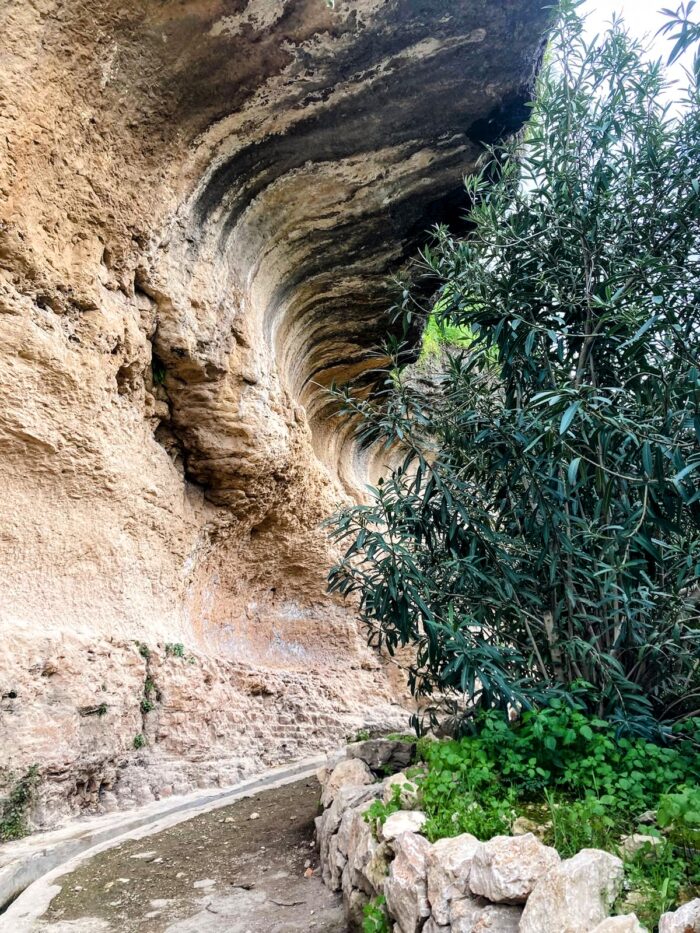

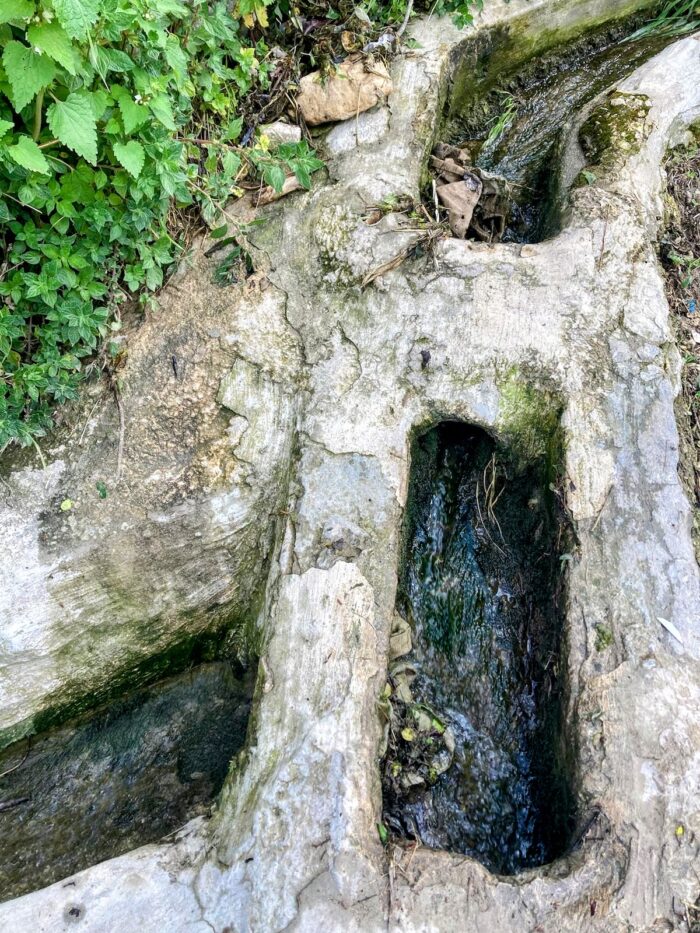
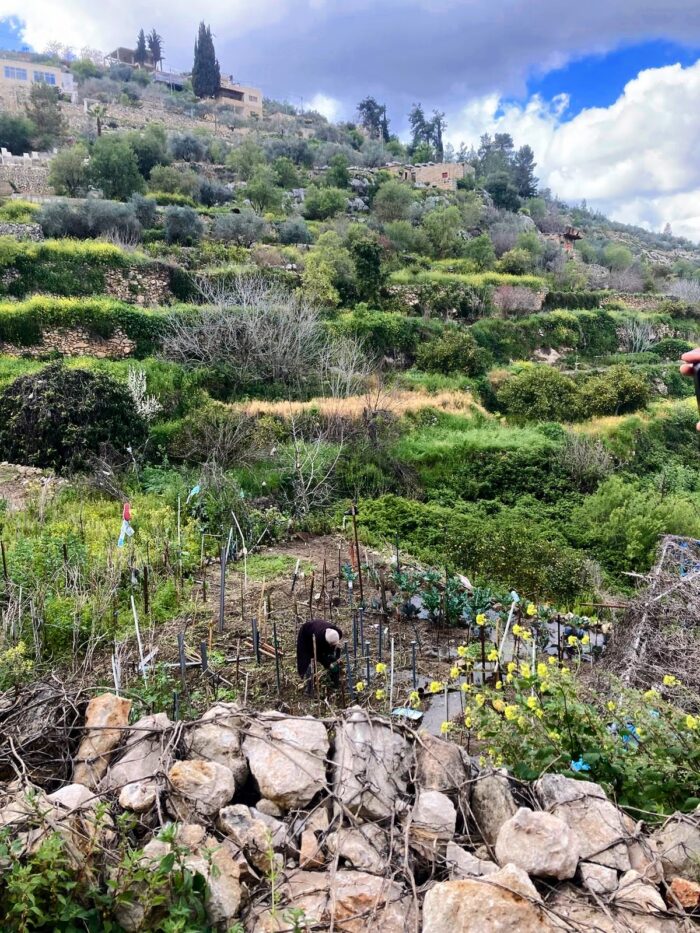

East and west slope show clearly who the true stewards of the land are.
The walking path was once shown only by red and white Palestinian markers but recently the colonizers compulsively/ childishly added their own mark beside them.
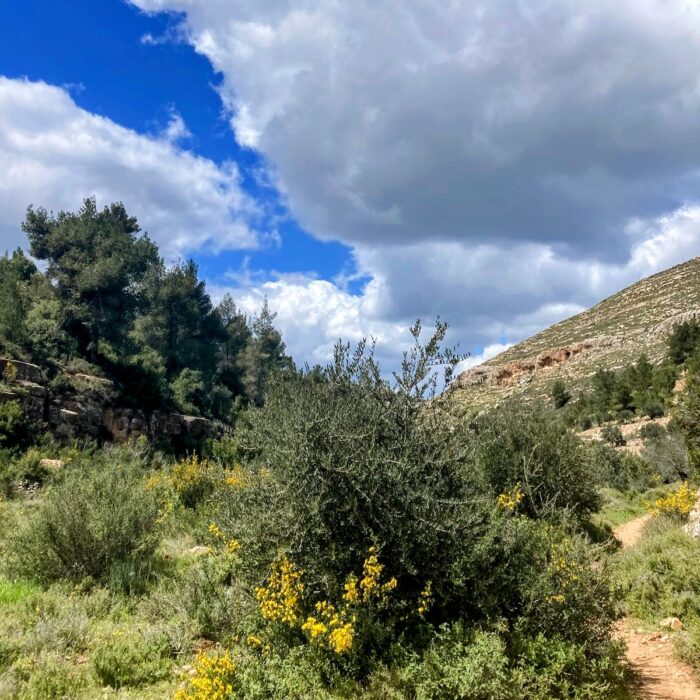

There are separate roads everywhere: the “civilian road” for Israelis and the longer, less maintained roads with checkpoints for Palestinians.
